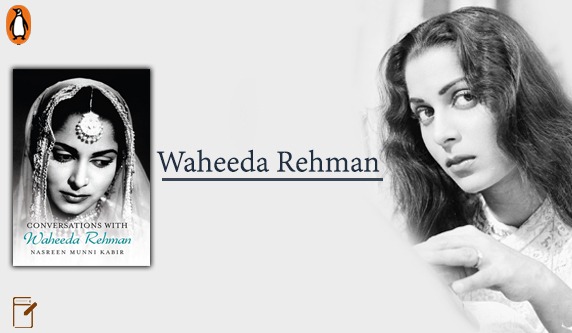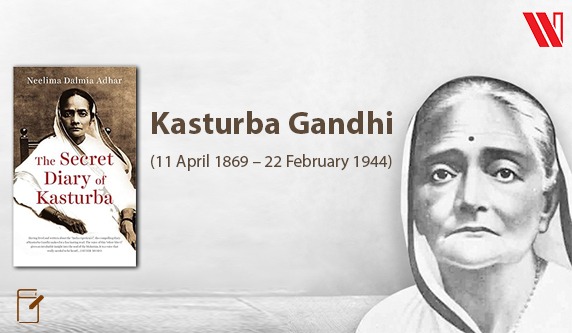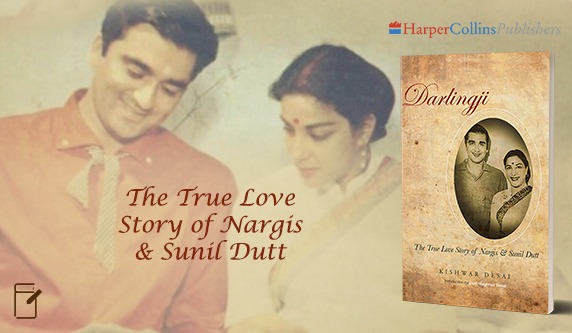The inimitable enigma of Waheeda Rehman turns 83 today. We take a look at one of the most candid Cinema books, Conversations with Waheeda Rehman by the acclaimed film-writer, Nasreen Munni Kabir.
Not Just Any Actor
When Nasreen Munni Kabir asked Waheeda Rehman about writing a book on her, Waheeda Rehman said no with a coy smile. Later Waheeda Rehman revealed to Nasreen that she has this habit of saying no at first, even when a film role came her way.
This was Waheeda Rehman. A thinking actor and collaborator. Forever apprehensive of overt praise and questioning everything to get a clear picture. ‘Her humility is genuine’, Nasreen writes in her book, Conversations with Waheeda Rehman.
But what about her acumen as a professional? Nasreen describes the setting of her conversations with Waheeda Rehman this way, ‘…we met over twenty-five times in her Bandra home. Our conversations in Hindustani and English were recorded and later transcribed.[….] Each of our sessions would last for about two hours. After a few weeks, a relaxed and easy routine set in. I’d ring the doorbell at Sahil, her home in Bombay, and a domestic would open the door and show me into an expensive living room that overlooked the sea–a most gorgeous room dominated by a striking portrait of Waheeda Rehman by M.R. Achrekar. From the living room, I was led to the dining area where I’d set up my MacBook Pro and digital recorder. A minute or two later, Waheedaji walked in, wearing a simple and elegant salwar kameez, smiled warmly, ordered me a nimbu-paani and then we settled down to talk. Her discipline and respect for work showed–she never took calls or sent text messages or allowed anything to interrupt the conversation. Her concentration and attention was total.’
I think a director has to be a little in love with his leading actress so he will project her as the most beautiful woman in the world.
Waheeda Rehman
Chaudhvin Ka Chand Ho Ya Aafataab Ho
One of the most exciting things about the book is its conversational style of writing, and it succeeds in maintaining the natural flow throughout. It gives invaluable insights into Waheeda Rehman’s childhood, but most importantly her years with Guru Dutt. The film-maker with whom she associated closely professionally affected the trajectory of her career in the initial years.
Waheeda Rehman’s prowess as an actor found an echo in the sentiments of one of the most celebrated filmmakers of all time, Satyajit Ray. The faith that Satyajit Ray put in her talent and how he kept his word of working with Waheeda Rehman in Abhijaan makes for an interesting read.
And the bits of information that come out from her films with Vijay Anand, and her marriage to actor Kamaljeet Rekhi make it an insightful book. On her alleged affair with Guru Dutt, all Rehman told Kabir was: “I know we are public figures, but I strongly believe my private life should remain private. What ultimately matters and concerns the world is the work we left behind.”
Here are the Edited excerpts from Nasreen Munni Kabir’s (NMK) Conversations with Waheeda Rehman Rehman (WR) on her experiences on Abhijan and Guide:
On Satyajit Ray and ‘Abhijan’
NMK: How did Satyajit Ray approach you?
WR: A few days later I called Mr Ray in Calcutta and the first thing he said was: ‘Waheeda, you earn a lot of money in Hindi films. I make films on small budgets.’ ‘Saab, why are you embarrassing me? It is an honour for me. You have shown me much respect by asking me to work with you. There is no problem about the money. I prefer you don’t mention it.’
I explained to him that I didn’t speak Bengali, and he said the character he wanted me to play, Gulaabi, is from the Bihar-Bengal border and talks in a mix of Bhojpuri and Bengali. Therefore the language should not be a problem for me.
NMK: What was your first impression of him?
WR: He had such a towering personality. He had a deep voice and a particular style of speaking.
Ray Saab was meticulous and explained everything in great detail. He sketched every scene and made detailed shot breakdowns, even noting the lens he planned to use. His storyboarding was extremely helpful. In those days no one had heard of storyboarding. He was also one of the few directors who gave me a bound script.
There was a scene in Abhijan where I am sitting in a ghoda gaadi (horse carriage) and a sethji is forcibly taking me away. Soumitra (Chatterjee) comes, I look at him and jump out of the carriage and run away. Before Ray Saab could say anything to me, I glanced at the sethji and jumped out. Mr Ray quickly said: ‘I was about to ask you to do just that. But you did it before I could say anything!’
Satyajit Ray made films the way films should be made—from start to finish. So whether you’re needed on the set or not, you can spend your whole time thinking about your character. It’s not just about learning the dialogue and facing the camera, you must somewhat live the role and not always be acting it.
NMK: Did you ever discuss the possibility of Mr Ray making a film in Hindi?
WR: His wife would ask me to encourage him to do so. When I spoke to him about it, he said: ‘Some day I want to, but then you have all those lengthy songs and dances and all that.’ I think he was reluctant to make a film in Hindi because he did not know Hindi well and believed that was essential. ‘One thing is certain—if I make a Hindi movie, I will cast you.’
Many years later when he was making Shatranj Ke Khilari, he called me and said: ‘Waheeda, I promised to cast you, but I don’t feel the role in this film will suit you.’
On ‘Guide’, adapted from R.K. Narayan’s book, and her spat with film-maker Raj Khosla
NMK: Were you familiar with R.K. Narayan’s novel before starting the film?
WR: It was Mr Ray who asked me to read the novel because he was considering adapting it. He told me if the film ever took off, he would cast me as Rosie. I had forgotten all about it when a year or two later Dev told me he was producing the film. Satyajit Ray would have conceived the film in a completely different way. But I believe I was fated to play Rosie…
NMK: You seemed to suggest there was a possibility that you might not have played Rosie.
WR: I almost didn’t, because Dev announced that Raj Khosla was going to direct. I said: ‘Dev, have you forgotten how we quarrelled during the making of Solva Saal?’ ‘Forget it, my friend. Everyone fights in life… You are a mature person and Raj has changed.’ …in the end Dev decided against Raj Khosla as director.
NMK: What was your disagreement with Raj Khosla?
Our clothes are wet, and so we go to a nearby dhobi ghat and the dhobi lends us some clothes till our clothes have dried. What do I see? The costume department gives me a chiffon sari and a strapless blouse. I looked at Raj Khosla and asked: ‘Rajji, am I going to wear this?’ He said: ‘I know you! Try it, but if you don’t feel comfortable, wear whatever you want.’
I took the blouse off and put on another blouse with sleeves. When I returned to the set, Raj Khosla saw me and lost his cool. ‘You don’t listen to your director. Who do you think you are? Madhubala? Meena Kumari? Nargis? Only two of your pictures have been released, and you want to have your way.’
He reminded me how I had insisted on keeping my name when I first signed the contract with Guru Dutt Films, and the fuss I made about the costumes in C.I.D. But I said: ‘Rajji, you told me if I didn’t feel comfortable, I didn’t have to wear this blouse.’ Dev then turned to me and asked: ‘Waheeda, what’s the problem?’ I explained to Dev: ‘In this scene the hero asks me my name and I say it is Laajwanti (bashful/shy). And he says: “Tabhi toh itni laaj aati hai.”’ (That’s why you’re so shy.)
If this is the dialogue in the scene, I asked Raj Khosla, would this shy sixteen-year-old wear revealing clothes in front of a man who is an utter stranger at that point of the story? He said: ‘Oh, now you are talking about logic…Lo ji, now she’s telling me how to direct.’
Raj Khosla decided to wrap for the day. The next day we returned to the set. Everyone had calmed down. I wore a different blouse and we carried on shooting.
The book can be picked up at your nearest bookstore or here.




No Comments